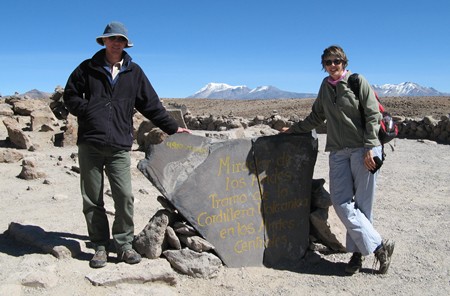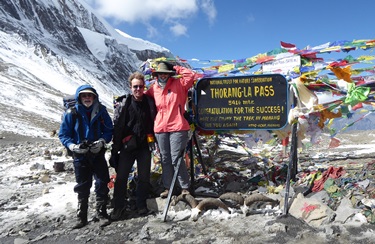
I had read a fair bit about the effects of high altitude on the human body before going to the Andes in Peru in 2010. But despite that, the effect of a jump from sea level to 3400 metres above sea level when we flew from Lima on the Peruvian coast to Cusco, the ancient Inca capital, was shocking. Initially I felt fine, but as the day wore on I began to feel worse and worse. By evening most of the symptoms of Acute Mountain Sickness (AMS) had set in - headache, nausea, lethargy and lack of appetite, resulting in a totally sleepless first night in Cusco. I remember also standing at the bottom of a flight of stairs and looking up, wondering how I was going to make it to the top.

But after a wretched day and two nights I felt absolutely fine, and later on that trip I went as high as 4910 metres without any further ill effects. So high altitude can be successfully managed, provided you allow enough time for acclimatization.
In 2016 my wife and I went to Nepal and walked the Annapurna Circuit in the Himalayas. This was pushing the limits of high altitude further than either of us had been before, because completing the circuit requires you to cross a pass (Thorung La) that is 5416 metres above sea level. Oxygen levels at that altitude are only HALF of what they are at sea level, a very scary thought ...
But we had learned the lesson of acclimatization in Peru and approached things cautiously - it took 12 days of walking for us to ascend to 5416 metres from the starting point below 1000 metres. The trick, as recommended by the doctors at the Himalaya Rescue Association aid station in Manang, is to limit your altitude gain to an absolute maximum of 500 metres per day once you're over 3000 metres. That's what we did, and we managed without any major problem (minor headaches and a little nausea excluded).

But you ignore these guidelines at your peril. Trekkers die in Nepal every year because they ascend too quickly, thinking they can "tough it out" or "hang in there". The problem is that altitude sickness isn't like being exhausted while running a marathon - you can't simply force yourself on. If your body hasn't adapted to the lower oxygen levels, going higher will only make the problem worse. It doesn't matter how strong, tough or young you are; if your body isn't able to function properly using less oxygen it will simply give in ... and you will die.
Most people will experience some of the symptoms of Acute Mountain Sickness (AMS) at one time or another when they go higher than 3000 metres above sea level. AMS is usually harmless and if you wait a couple of days you'll acclimatize and feel fine (as I did in Peru). But higher up things can get a whole lot worse - High Altitude Cerebral Edema (HACE) and High Altitude Pulmonary Edema (HAPE) are ever-present dangers. The only cure for either of these is to descend to where there's more oxygen, and FAST. Once you get either HACE or HAPE you will be dead within 12 hours unless your oxygen-starved system is treated. In fact, when we were at Thorung High Camp in Nepal (4925 metres) we saw a helicopter arrive and take on a lady trekker who was obviously in severely bad condition. Once she was on board the helicopter descended rapidly to the valley floor.
So the lessons to heed when trekking or climbing at high altitude are:
Being super-fit doesn't help, I'm afraid - it's just a genetic lottery as to whether you were born with the ability to adapt to lower oxygen levels or not. All you can do is be careful and hope for the best, but be prepared to abandon your high altitude goal if you have to ... giving up may actually save your life.
 © Paul Kilfoil, Cape Town, South Africa
© Paul Kilfoil, Cape Town, South Africa